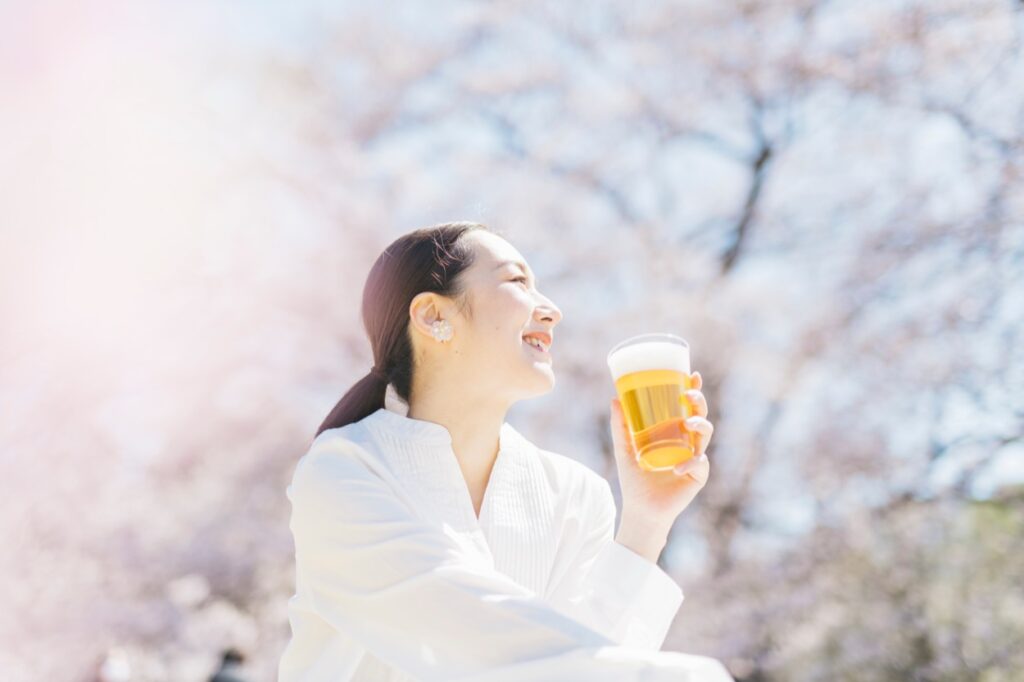The reason why people want to drink under the cherry blossom trees is because Japanese people connect food with trees and give their wishes and feelings to them The reason is because people want to drink under the cherry blossom trees.
Updated by Tomoko Ogura on October 21, 2025, 5:37 PM JST
Tomoko OGURA
Total Food Corporation / Japan Chopstick Culture Association
(Representative Director of Total Food, Inc., comprehensive food consultant / Outside director of two companies listed on the Tokyo Stock Exchange / Concurrent lecturer at Asia University, Toyo University, and Tokyo Seitoku University / President of Shoku Kijuku / President of Japan Chopstick Culture Association, etc. / After working for Toyota Motor Corporation's Public Relations Department, he became director of international conferences and studied abroad before assuming his current position. After working for Toyota Motor Corporation's Public Relations Department, he worked as a director of an international conference and studied abroad before assuming his current position. With "food and mind" as his main focus, he is well versed in all areas of food, from trends (analysis and development) to food culture, manners, nutrition, health management, food environment and mental health, and has a wide range of specialties. He has written academic papers on "chopstick culture and rituals," "Japanese chopsticks and peculiarities," and "waribashi and the food service industry," and has authored and supervised numerous books on chopsticks. He is said to be the only researcher of Japanese chopstick culture in the world.Total Food official website Japan Chopstick Culture Association website
When you visit shrines and temples, you may see people placing their hands on trees that are as long as a thousand years old. Trees live for years on rain, dew, moisture in the air, and nutrients from the soil, so it is likely that people touch a part of their bodies to share their life force and mystical powers with the tree.
It is said that this act is based on the concept that trees are alive in the first place, and that there is a connection with Shinto rituals as well as a respect for trees.last time, ,the time before lastI wrote that "Japanese people make wishes and bring good luck with the materials used to make chopsticks.
Let's take the cherry tree as an example. Why do Japanese people want to have a party under a cherry tree? There are many places in other countries that are famous for their cherry blossoms. Even so, they do not have drinking parties. The basic reason is that outdoor drinking is prohibited in many places, but is that all? Japanese people also enjoy viewing flowers other than cherry blossoms, but have little desire to reserve a place for a party or drink alcohol. It would not be an exaggeration to say that Japanese people have a special feeling for cherry blossoms, not only for drinking, but also for their extraordinary sympathy and interest in them.
Since ancient times, it has been believed that the spirit of a god resides in cherry trees, and they were considered to be trees of spirits. Some believe that this is why the custom of drinking sake in the lap of the gods was established. Sake is also called “omiki” in Shinto rituals, which is derived from the Yamato word for sake. The “o” in “omiki” means something related to the gods. The “o” in “omiki” means something related to the gods, and the “mi” in "omiki" also means the same thing. The "ki" in "omiki" is thought to be an ancient word meaning "sake," and in folklore, it is thought to be the same root as "ke," meaning "daily food," and refers to "meal. In other words, "omiki" means "a meal offered to the gods = sake.
This is why sake is still served to the gods at shrines and jingu festivals, and why sake is indispensable at mass festivals. In other words, the "banquet under the cherry tree" is to be held in the lap of the god of trees, where the spirit of the god dwells, and to be served together with the god.

Trees are also used in Japanese sweets. Kashiwa Mochi, a famous early summer confectionery, is wrapped in oak leaves. The leaves have antibacterial properties that helped prevent spoilage in the days when refrigerators did not exist. In addition to these rational reasons, the oak tree is a deciduous tree, but its old leaves remain on the branches until new shoots appear in the spring. For this reason, it is thought that the tree was eaten on Children's Day ceremonies to wish for the tree to "grow up with a heart that never withers" and "grow up in good health.
There are also connections between trees and food in other countries. For example, the standard Xmas cake in France is the "bûche de Noël," which resembles a stump. Winters in France are cold, and fireplaces were indispensable in the days when stoves were scarce. It is said that the stump, essential for keeping warm, became the motif for this cake. However, in general, stumps are considered by the French to be an important "tool" or "object" for humans, which seems to differ from the Japanese perception of trees.
The Japanese have always associated food with the gods, and since they also had a sense of nature worship, oneness with nature, and reincarnation, it seems natural that they would associate the act of eating with the life force of trees and the sacred power of trees. This sensibility is uniquely Japanese, but in recent years it is being lost even among the Japanese people. (Tomoko Ogura, President of Total Food Corporation and Representative of the Japan Chopstick Culture Association)